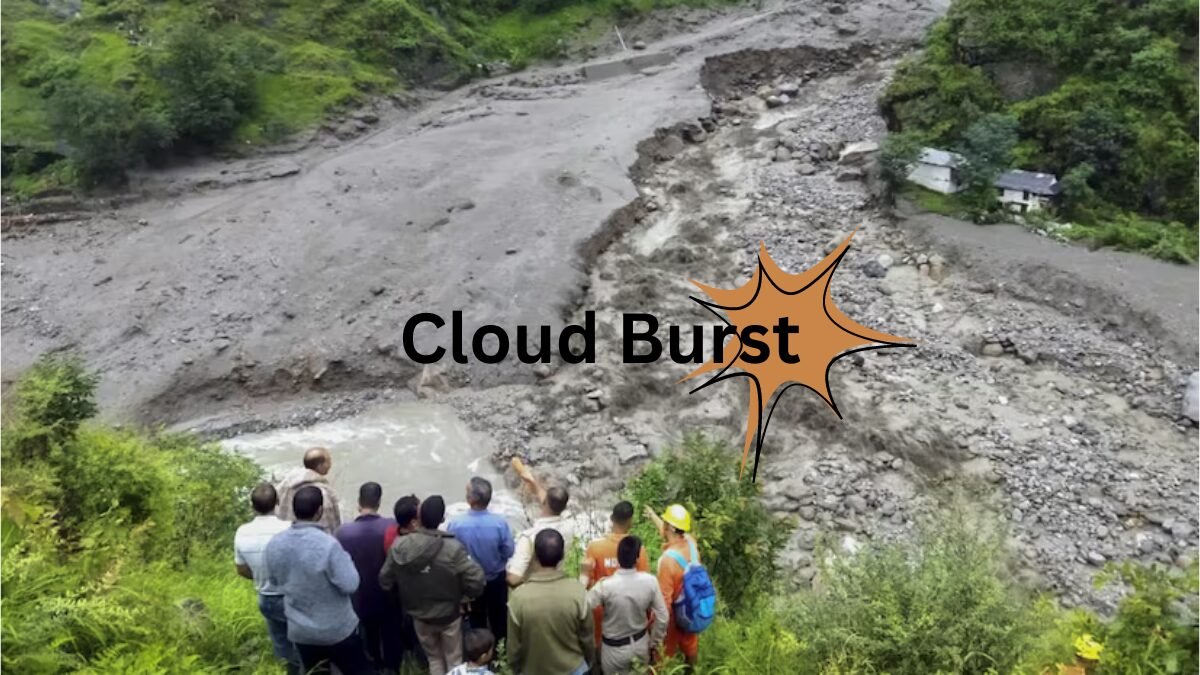A cloud burst is a natural meteorological phenomenon characterized by sudden and heavy rainfall over a localized area in a short period of time. This intense precipitation can lead to flash floods, landslides, and significant damage to property and infrastructure. Understanding the causes, effects, and mitigation strategies of cloud bursts is crucial for minimizing their impact on human lives and the environment.
Understanding Cloud Bursts
Cloud bursts occur when a large amount of moisture-laden air is rapidly uplifted in a small area, causing the air to cool and condense quickly. This rapid condensation leads to the formation of heavy rain clouds, which release a substantial amount of water in a very short time. Unlike regular rainfall, which is distributed over a larger area and time frame, cloud bursts result in concentrated rainfall, often exceeding 100 mm (4 inches) per hour.
Causes of Cloud Bursts
Several factors contribute to the formation of cloud bursts:
- Orographic Lift: This occurs when moist air is forced to ascend over a mountain range. As the air rises, it cools and condenses, leading to the formation of heavy rain clouds. The steep terrain can further intensify the rainfall, resulting in a cloud burst.
- Convective Activity: Intense heating of the earth’s surface can cause strong updrafts, lifting moisture-laden air to higher altitudes. The rapid cooling and condensation at these heights can lead to cloud bursts.
- Monsoon Patterns: In regions affected by monsoon winds, the sudden influx of moist air can create conditions conducive to cloud bursts. The interaction between monsoon winds and local topography can amplify the intensity of rainfall.
- Atmospheric Instability: Unstable atmospheric conditions, where warm, moist air is trapped beneath a layer of cooler air, can lead to the rapid development of thunderstorms and cloud bursts.
Impacts of Cloud Bursts
The effects of cloud bursts are often devastating, particularly in hilly and mountainous regions:
- Flash Floods: The intense rainfall from a cloud burst can overwhelm rivers and streams, leading to sudden and severe flooding. These flash floods can sweep away vehicles, homes, and even people, causing significant loss of life and property.
- Landslides: The saturated soil in hilly areas becomes unstable, leading to landslides that can bury entire villages and disrupt transportation networks. Landslides triggered by cloud bursts are particularly dangerous due to their sudden onset and the sheer volume of debris involved.
- Infrastructure Damage: Roads, bridges, and buildings are often unable to withstand the force of flash floods and landslides, resulting in extensive damage. Rebuilding efforts can be costly and time-consuming, impacting the local economy.
- Loss of Agricultural Land: The fertile topsoil can be washed away by flash floods, leading to long-term damage to agricultural land. This can impact food production and the livelihoods of farmers.
- Human Casualties: The sudden and unpredictable nature of cloud bursts makes it difficult for people to evacuate in time. As a result, many lives are lost during such events.
Notable Cloud Burst Incidents
Several significant cloud burst incidents have been recorded around the world, highlighting the destructive power of this phenomenon:
- Uttarakhand, India (2013): One of the most devastating cloud bursts in recent history occurred in the Indian state of Uttarakhand. The intense rainfall triggered flash floods and landslides, causing extensive damage to infrastructure and claiming thousands of lives.
- Leh, India (2010): The town of Leh in the Ladakh region experienced a severe cloud burst that led to flash floods and mudslides. The disaster resulted in the loss of hundreds of lives and widespread destruction of property.
- Venezuela (1999): A cloud burst in the coastal state of Vargas caused massive landslides and flooding. The disaster claimed thousands of lives and left many more homeless.
Mitigation and Preparedness
While cloud bursts cannot be prevented, several measures can be taken to mitigate their impact:
- Early Warning Systems: Developing and implementing early warning systems can help provide timely alerts to vulnerable communities. This allows for evacuation and other precautionary measures to be taken in advance.
- Infrastructure Planning: Building resilient infrastructure that can withstand flash floods and landslides is crucial. This includes constructing flood barriers, improving drainage systems, and ensuring that buildings are designed to withstand extreme weather events.
- Land Use Planning: Restricting construction and development in high-risk areas can reduce the potential damage caused by cloud bursts. This includes avoiding building on floodplains and steep slopes prone to landslides.
- Community Awareness: Educating communities about the risks associated with cloud bursts and the appropriate response measures can save lives. This includes conducting regular drills and providing information on evacuation routes and safety protocols.
- Reforestation: Planting trees and restoring natural vegetation can help stabilize soil and reduce the risk of landslides. Forests also play a role in regulating the water cycle and reducing the impact of heavy rainfall.
Conclusion
Cloud bursts are powerful and unpredictable natural events that pose significant risks to human life and property. Understanding their causes and effects, along with implementing effective mitigation strategies, is essential for reducing their impact. By investing in early warning systems, resilient infrastructure, and community preparedness, we can better protect vulnerable populations and minimize the damage caused by these sudden and intense rainstorms.
My name is Yogesh Pandey, and I hail from Lucknow, India. I work in digital marketing. I have been blogging since 2023. I write about Technology, Entertainment, Automobile, and Lifestyle providing insights to help others find quality products. I am excited to have the opportunity to collaborate with weblog365.in now. You can reach out to me via email at weblog365.in@gmail.com. Let’s connect! 🙏
